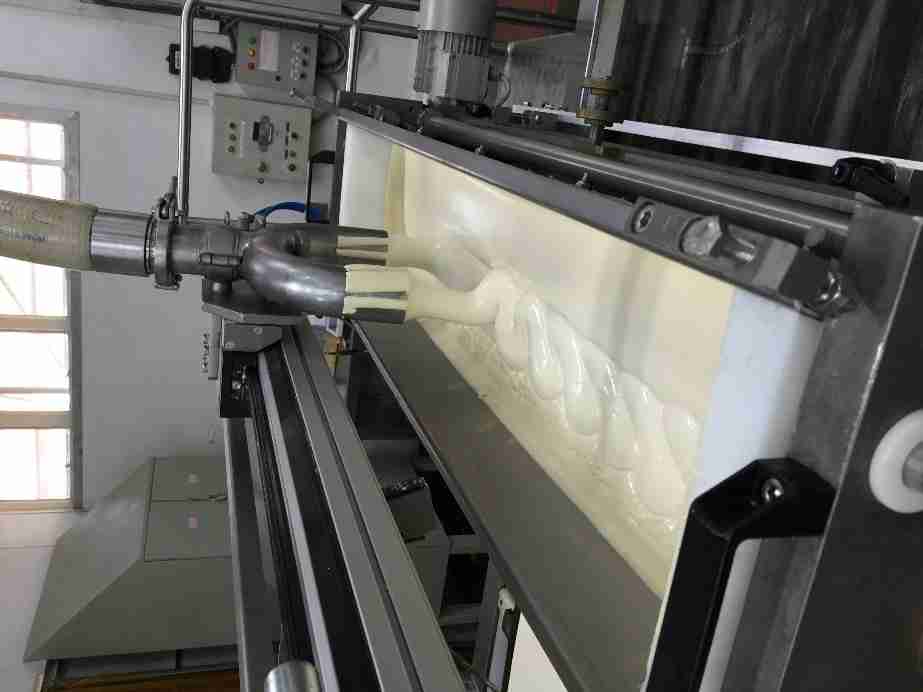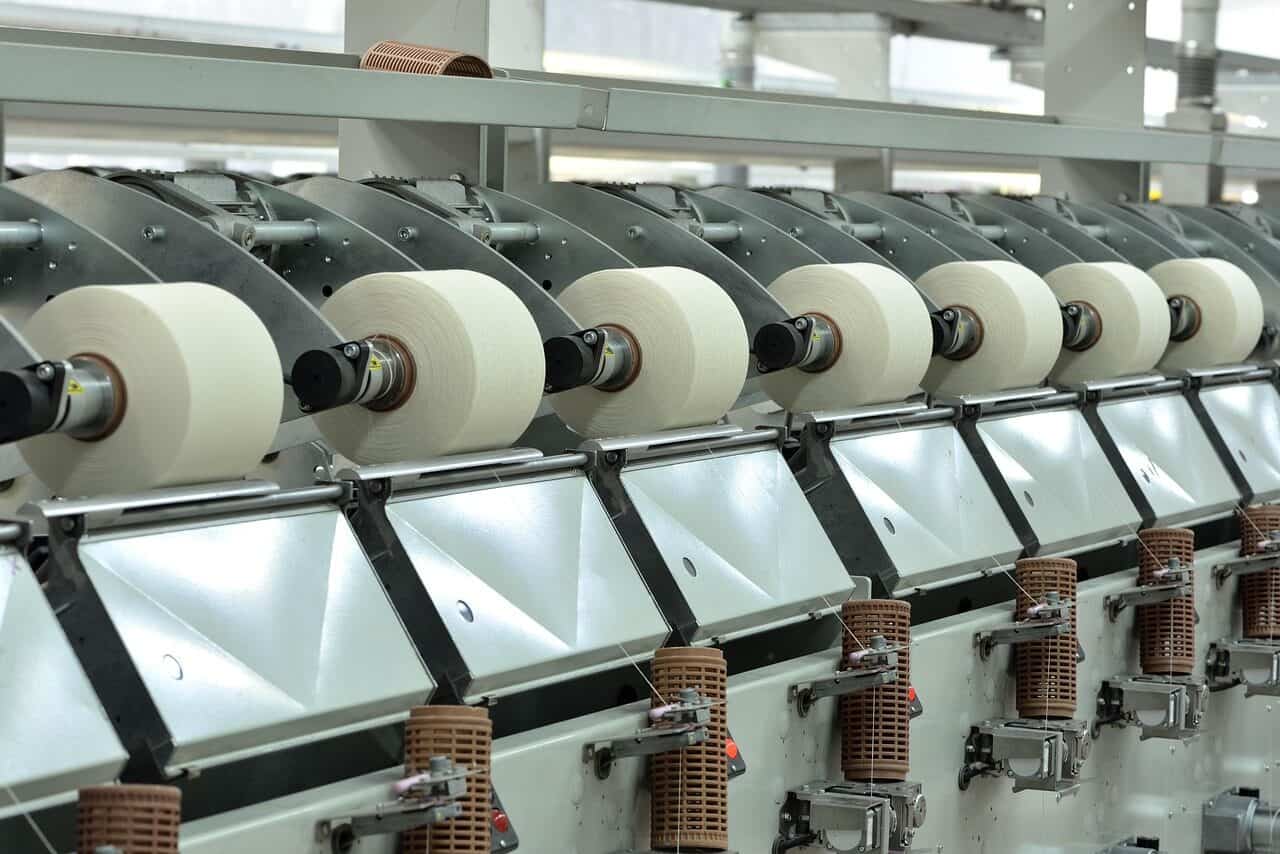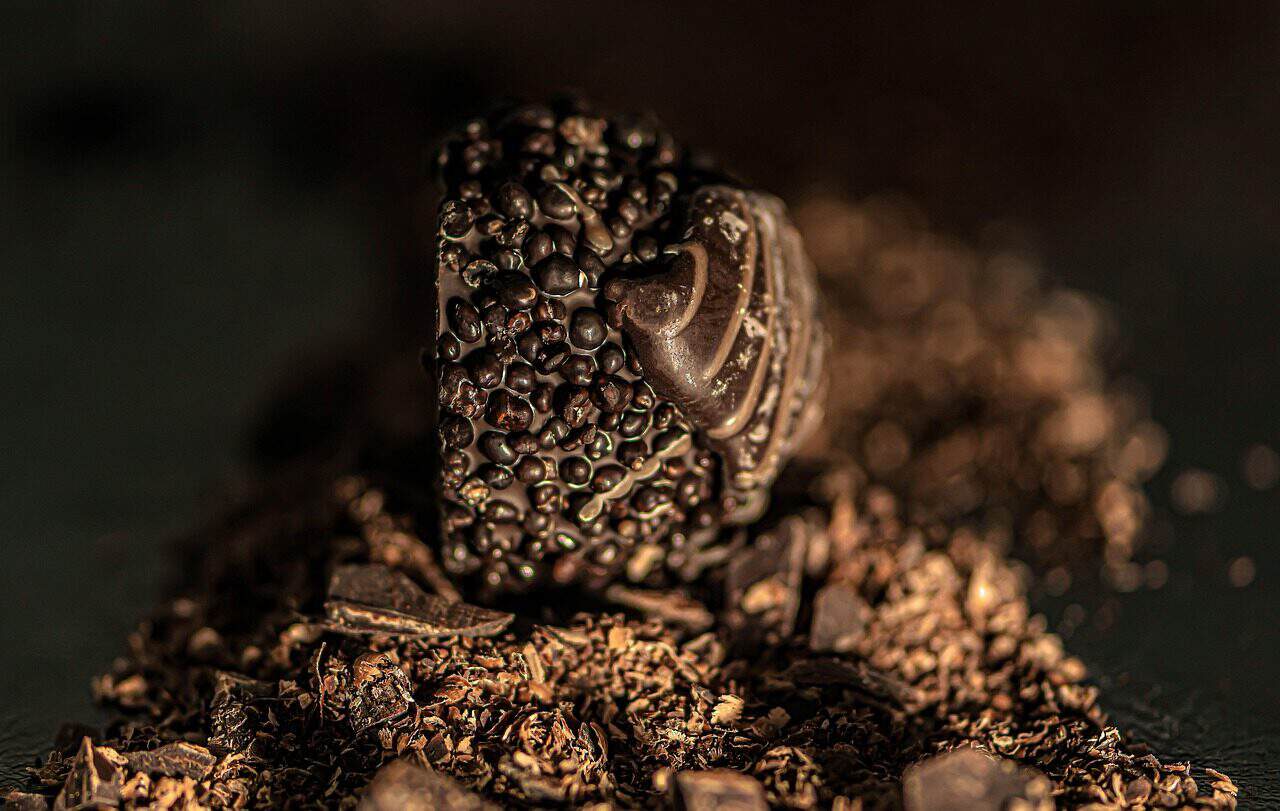Le meilleur Ligne de production de gâteaux pour une cuisson efficace et une production de qualité
Introduction à la cuisson efficace
Une cuisson efficace implique de rationaliser le processus de production des gâteaux afin de maintenir la qualité et l'homogénéité - un aspect essentiel de la production de gâteaux. La production efficace de gâteaux commence par la mesure et la manipulation précises des ingrédients, ce qui est essentiel pour la cohérence et la qualité dans les lignes de production automatisées.
Automatisé lignes de production de gâteaux intégrer les différentes étapes, du mélange de la pâte à la décoration et à l'emballage, pour produire des gâteaux de haute qualité.
La ligne de production est conçue pour accroître l'efficacité, réduire les coûts de main-d'œuvre et garantir l'uniformité de la taille et de la qualité des gâteaux.
En mettant en place un système de cuisson efficace, les boulangeries peuvent améliorer leur capacité de production et répondre à la demande croissante de gâteaux.
Des lignes de production efficaces permettent également aux boulangeries de proposer une large gamme de gâteaux, y compris des génoises, des muffins et des gâteaux personnalisés avec divers nappages et décorations.
Types de lignes de production
- Différents types de production Les lignes de production répondent aux besoins spécifiques des boulangeries, y compris les lignes semi-automatiques et entièrement automatiques pour la production de gâteaux..
- Les lignes de production peuvent être conçues pour différents types de gâteaux, tels que les génoises, les gâteaux à étages et les gâteaux au chocolat, chacun ayant son propre processus de production.
- Automatique lignes de production de gâteaux sont populaires parmi les grandes usines alimentaires en raison de leur haut niveau d'automatisation, de leur grande capacité et de leurs besoins réduits en main-d'œuvre.
- Certaines lignes de production sont spécialisées dans la décoration et l'emballage, tandis que d'autres se concentrent sur la cuisson et le refroidissement, en utilisant des équipements tels que des fours tunnels et des convoyeurs de refroidissement.
- Le choix de la ligne de production dépend de facteurs tels que la capacité de production, l'espace disponible et le type de gâteaux produits, ainsi que du besoin d'automatisation et d'efficacité.
- Les lignes de production peuvent être personnalisées pour répondre aux besoins spécifiques d'une boulangerie, y compris la production de gâteaux avec du fondant, du glaçage et d'autres décorations.
Capacité de production
- La capacité de production est un facteur crucial dans le choix d'une ligne de production de gâteaux, car elle affecte directement le nombre de gâteaux pouvant être produits par heure.
- Les boulangeries doivent tenir compte de leurs besoins de production actuels et futurs lorsqu'elles choisissent une ligne de production, en prenant en considération des facteurs tels que le temps de cuisson, le temps de refroidissement et l'efficacité de l'emballage.
- Les lignes de production de plus grande capacité nécessitent souvent plus d'espace et d'investissement, mais peuvent conduire à une efficacité et une rentabilité accrues, ce qui en fait un aspect essentiel de la production de gâteaux.
- La capacité de production d'une ligne peut être mesurée en termes de nombre de gâteaux produits par heure, certaines lignes pouvant produire des centaines de gâteaux par heure.
- En optimisant la capacité de production, les boulangeries peuvent réduire les déchets, améliorer la qualité et accroître la satisfaction des clients, ce qui se traduit en fin de compte par une augmentation des ventes et des revenus.
Principaux éléments d'une ligne
- Un exemple typique chaîne de production de gâteaux se compose d'éléments clés tels que des mélangeurs, des dépileurs, des moules, des fours (y compris des fours tunnels), des convoyeurs de refroidissement et des machines d'emballage, qui travaillent tous ensemble pour produire des gâteaux de haute qualité. Les moules sont essentiels pour façonner et maintenir la pâte pendant la cuisson, garantissant ainsi l'uniformité de la taille des gâteaux.
- Chaque élément joue un rôle essentiel pour garantir la qualité et la régularité du produit final, du mélange de la pâte à la décoration et à l'emballage, chaque étape, comme le dépôt de la pâte dans les moules et la cuisson dans les fours, faisant l'objet d'un contrôle de qualité minutieux.
- La précision et la cohérence de ces composants sont essentielles pour produire des gâteaux qui répondent aux attentes des clients. Des facteurs tels que la taille, la forme et la décoration du gâteau, ainsi que sa forme, qui est déterminée par le moule et le processus de dépôt, sont tous essentiels.
- Les fours peuvent être des fours tunnels, qui sont économes en énergie et conviennent à la cuisson à grande échelle.
- Après la cuisson, les convoyeurs de refroidissement sont utilisés pour amener les gâteaux à la température appropriée. Les tunnels de refroidissement, en tant que sections de convoyeurs spécialisés, refroidissent rapidement les gâteaux après la cuisson ou l'enrobage au chocolat, ce qui permet de fixer les décorations et de maintenir la qualité du produit.
- La maintenance et l'entretien réguliers de ces composants sont nécessaires pour éviter les temps d'arrêt et garantir des performances optimales, ce qui en fait un aspect crucial de la production de gâteaux.
- En investissant dans des composants de haute qualité, les boulangeries peuvent améliorer l'efficacité globale de leur chaîne de production, ce qui se traduit par une augmentation de la productivité et de la rentabilité.
Choisir le bon équipement
- Le choix d'un équipement approprié est crucial pour l'optimisation de vos activités. chaîne de production de gâteaux et de garantir une production cohérente et de haute qualité.
- La capacité de production de chaque machine doit correspondre aux besoins de votre boulangerie, en tenant compte de la taille souhaitée des gâteaux, du volume de production et du temps de cuisson pour chaque lot.
- Lorsque vous choisissez des machines à mélanger et à décorer la pâte, tenez compte des types de gâteaux que vous prévoyez de produire, comme les génoises, les muffins ou les gâteaux spéciaux avec des garnitures uniques.
- Il est important d'évaluer le niveau d'automatisation requis pour votre processus de production, ainsi que les besoins en équipements complémentaires tels que les convoyeurs de refroidissement, les fours tunnels et les machines d'emballage efficaces.
- L'équipement doit être conçu pour maintenir la qualité et la cohérence à chaque étape, de la préparation et du mélange des ingrédients à la cuisson, au refroidissement et à l'emballage final.
- En investissant dans des machines adaptées à votre ligne de production, vous pouvez améliorer l'efficacité, réduire les coûts opérationnels et produire régulièrement des gâteaux qui répondent aux attentes des clients.
Personnalisation et flexibilité
- La personnalisation et la flexibilité sont essentiel dans une ligne de production de gâteauxIls permettent aux boulangeries de s'adapter à l'évolution des tendances du marché et des préférences des clients, comme la demande de gâteaux personnalisés avec des décorations uniques.
- Les lignes de production peuvent être conçues pour accueillir différents types de gâteaux, de décorations et d'options d'emballage, ce qui les rend plus polyvalentes et plus efficaces.
- La flexibilité des lignes de production permet aux boulangeries de répondre rapidement aux changements de la demande, de réduire les délais et d'améliorer la satisfaction des clients, grâce à des fonctions telles que la décoration et l'emballage automatisés.
- Les options de personnalisation peuvent inclure différentes tailles, formes et décorations de gâteaux, ainsi que différents types de glaçages et de nappages, et l'ajout de garnitures ou d'éléments décoratifs pour améliorer le produit final, rendant chaque gâteau unique et adapté aux préférences du client.
- En offrant personnalisation et flexibilité, les boulangeries peuvent se différencier de leurs concurrents et attirer une clientèle plus large, ce qui se traduit en fin de compte par une augmentation des ventes et du chiffre d'affaires.

Entretien et maintenance
- La maintenance et l'entretien réguliers sont essentiels pour garantir les performances optimales d'une ligne de production de gâteaux, Les tâches telles que le nettoyage, la lubrification et le remplacement des pièces sont toutes essentielles.
- Les boulangeries doivent prévoir un entretien régulier pour éviter les temps d'arrêt et réduire le risque de défaillance des équipements, en tenant compte de facteurs tels que le temps de cuisson, le temps de refroidissement et l'efficacité de l'emballage.
- La maintenance et l'entretien peuvent être assurés par des techniciens internes ou des prestataires de services externes, en fonction des ressources et de l'expertise de la boulangerie.
- Il est également essentiel de tenir des registres détaillés de la maintenance et de l'entretien afin de suivre les performances des équipements et d'identifier les points à améliorer, ce qui facilite l'optimisation de la chaîne de production.
- En donnant la priorité à la maintenance et à l'entretien, les boulangeries peuvent prolonger la durée de vie de leur équipement, réduire les coûts et maintenir une production de gâteaux de haute qualité.
Exigences spatiales et installation
- Les exigences en matière d'espace pour une ligne de production de gâteaux dépendent de la taille et de la complexité de l'équipement, ainsi que de l'espace disponible dans la boulangerie.
- Les boulangeries doivent s'assurer qu'elles disposent d'un espace suffisant pour la ligne de production, y compris pour le fonctionnement, l'entretien et l'expansion future de l'équipement, en tenant compte de facteurs tels que le temps de cuisson, le temps de refroidissement et l'efficacité de l'emballage.
- Le processus d'installation doit être soigneusement planifié afin de minimiser les perturbations de la production et d'assurer une transition en douceur vers le nouvel équipement, doté de fonctions telles que la décoration et l'emballage automatisés.
- Il est également essentiel de prendre en compte la sécurité et l'efficacité de la chaîne de production, en veillant à ce qu'elle soit conforme à toutes les réglementations et normes applicables.
- En planifiant soigneusement l'installation et les exigences spatiales, les boulangeries peuvent s'assurer d'un succès et d'une réussite. ligne de production efficaceet donc d'une productivité et d'une rentabilité accrues.

Exigences et intégration des boulangeries
- L'intégration d'un nouvel équipement dans la chaîne de production de votre boulangerie nécessite une compréhension approfondie de vos besoins et objectifs opérationnels spécifiques.
- Évaluez votre capacité de production actuelle, la gamme de gâteaux que vous proposez et vos exigences en matière de décoration pour vous assurer que le nouvel équipement est adapté à votre boulangerie.
- L'équipement doit être compatible avec les machines et les processus existants, afin de permettre un flux de travail continu et de minimiser les perturbations lors de l'installation.
- Vérifiez si l'équipement peut traiter différents types de gâteaux, y compris ceux avec du fondant, du chocolat ou d'autres décorations spéciales, afin d'élargir votre offre de produits.
- Il est essentiel de choisir un équipement conçu pour l'échelle de votre boulangerie - qu'il s'agisse d'une petite, moyenne ou grande chaîne de production - afin de garantir des performances et une qualité optimales.
- En évaluant soigneusement vos besoins et en sélectionnant des équipements qui s'intègrent facilement, vous pouvez maintenir des normes élevées en matière de production de gâteaux et répondre aux demandes en constante évolution de vos clients.

Certifications et normes
- Les lignes de production de gâteaux doivent répondre à diverses certifications et normes, notamment celles relatives à la sécurité alimentaire, à la qualité et à la durabilité environnementale, telles que ISO 22000 et HACCP.
- Les boulangeries doivent veiller à ce que leurs lignes de production soient conformes aux réglementations et aux normes en vigueur, notamment en matière d'hygiène, d'assainissement et de gestion des déchets.
- Des certifications telles que ISO 9001 et ISO 14001 peuvent démontrer l'engagement d'une boulangerie en faveur de la qualité et de la responsabilité environnementale, ce qui la rend plus attrayante pour les clients et les investisseurs.
- Des audits et des inspections réguliers sont nécessaires pour maintenir le statut de certification et assurer une conformité continue, avec des caractéristiques telles que la décoration et l'emballage automatisés.
- En respectant les certifications et les normes, les boulangeries peuvent améliorer leur réputation, gagner la confiance de leurs clients et accéder à de nouveaux marchés, ce qui se traduit en fin de compte par une augmentation des ventes et des recettes.
Avantages des systèmes automatisés
- Les lignes de production automatisées de gâteaux offrent plusieurs avantages, notamment une efficacité, une régularité et une qualité accrues grâce à l'utilisation de technologies de pointe et de machines conçues pour les opérations de pâtisserie à grande échelle, avec des caractéristiques telles que le contrôle précis de la température et la décoration automatisée.
- L'automatisation peut réduire les coûts de main-d'œuvre, améliorer la productivité et permettre aux boulangeries de produire des gâteaux de haute qualité à moindre coût, ce qui les rend plus compétitives sur le marché.
- Les systèmes automatisés peuvent également améliorer la sécurité alimentaire et réduire le risque de contamination, grâce à des fonctions telles que le nettoyage et l'assainissement automatisés.
- En outre, l'automatisation peut fournir des données et des informations en temps réel, permettant aux boulangeries d'optimiser leurs processus de production et de prendre des décisions fondées sur des données, ce qui se traduit par une augmentation de la productivité et de la rentabilité.
- En investissant dans des systèmes automatisés, les boulangeries peuvent rester compétitives, améliorer la satisfaction des clients et stimuler la croissance de l'activité, ce qui se traduit en fin de compte par une augmentation des ventes et du chiffre d'affaires.
Ligne de production Fournisseurs et fabricants
- Les boulangeries peuvent se procurer des lignes de production de gâteaux auprès de divers fournisseurs et fabricants, tant au niveau local qu'international, avec des options allant de lignes semi-automatiques à des lignes entièrement automatiques.
- Lors de la sélection d'un fournisseur, les boulangeries doivent prendre en compte des facteurs tels que la qualité de l'équipement, le prix et le service après-vente, ainsi que le besoin de personnalisation et de flexibilité.
- Les fournisseurs doivent être en mesure de proposer des solutions personnalisées, des formations et des services de maintenance pour garantir les performances optimales de la ligne de production, avec des fonctions telles que la décoration et l'emballage automatisés.
- Il est également essentiel de se renseigner sur la réputation, l'expérience et les commentaires des clients du fournisseur afin de garantir un partenariat fiable et digne de confiance, ce qui facilitera l'optimisation de la chaîne de production.
- En s'associant à un fournisseur réputé, les boulangeries peuvent accéder à des équipements de haute qualité, à l'expertise et à l'assistance, ce qui se traduit par une productivité et une rentabilité accrues.
Mesures de contrôle de la qualité
Les mesures de contrôle de la qualité sont essentielles dans une ligne de production de gâteaux pour garantir l'uniformité et la qualité du produit final, avec des caractéristiques telles que la décoration et l'emballage automatisés.
Les boulangeries doivent mettre en œuvre des contrôles de qualité à différents stades du processus de production, y compris l'approvisionnement en ingrédients, le mélange de la pâte, la cuisson et l'emballage, ainsi que la vérification de la forme et de la structure de chaque gâteau pour garantir l'uniformité et la qualité, en tenant compte de facteurs tels que le temps de cuisson, le temps de refroidissement et l'efficacité de l'emballage.
Les mesures de contrôle de la qualité peuvent inclure des inspections visuelles, des tests de goût et des analyses en laboratoire pour s'assurer que les gâteaux répondent aux attentes des clients et aux normes réglementaires.
Il est également essentiel de tenir des registres détaillés des contrôles de qualité et de mettre en œuvre des actions correctives si nécessaire, ce qui facilite l'optimisation de la chaîne de production.
En donnant la priorité au contrôle de la qualité, les boulangeries peuvent gagner la confiance des clients, réduire les déchets et améliorer leur réputation, ce qui se traduit en fin de compte par une augmentation des ventes et du chiffre d'affaires.
Fonctionnement et gestion
- Le fonctionnement et la gestion efficaces de votre ligne de production de gâteaux sont essentiels pour maintenir la qualité, la cohérence et l'efficacité.
- Élaborer un plan global comprenant l'entretien régulier de toutes les machines, telles que les mélangeurs, les fours et les convoyeurs, afin d'éviter les temps d'arrêt et de garantir la fiabilité des performances.
- Suivre de près chaque étape du processus de production, du mélange de la pâte à la cuisson, au refroidissement, à la décoration et à l'emballage, avec des contrôles de qualité pour maintenir des normes élevées.
- Envisagez de mettre en œuvre des technologies d'automatisation, telles que des systèmes automatisés de décoration ou d'emballage, afin de rationaliser les opérations, de réduire les coûts de main-d'œuvre et d'accroître l'efficacité de la production.
- Former le personnel à l'utilisation et à l'entretien corrects des équipements afin de garantir un fonctionnement sans heurts et un dépannage rapide en cas de problème.
- En se concentrant sur des pratiques de gestion solides et sur l'amélioration continue des processus, les boulangeries peuvent produire des gâteaux de haute qualité, minimiser les déchets et améliorer la satisfaction des clients.
Dépannage et assistance
- Le dépannage et l'assistance sont essentiels pour résoudre les problèmes et minimiser les temps d'arrêt dans une chaîne de production de gâteaux, avec des fonctions telles que la décoration et l'emballage automatisés.
- Les boulangeries doivent mettre en place un système de soutien, comprenant une assistance technique, des pièces détachées et des services de maintenance, afin de garantir une résolution rapide des problèmes, en tenant compte de facteurs tels que le temps de cuisson, le temps de refroidissement et l'efficacité de l'emballage.
- Les fournisseurs de lignes de production doivent proposer une formation et une documentation complètes pour permettre au personnel de la boulangerie de dépanner et d'entretenir l'équipement, avec des options de personnalisation et de flexibilité.
- Il est également essentiel de tenir des registres détaillés des dépannages et de l'assistance afin d'identifier les problèmes récurrents et de mettre en œuvre des mesures préventives, ce qui facilite l'optimisation de la chaîne de production.
- En donnant la priorité au dépannage et à l'assistance, les boulangeries peuvent réduire les temps d'arrêt, améliorer l'efficacité et la satisfaction des clients, ce qui se traduit en fin de compte par une augmentation des ventes et du chiffre d'affaires.
L'avenir de la production de gâteaux
L'avenir de la production de gâteaux sera probablement façonné par des tendances telles que l'automatisation, la durabilité et la personnalisation, avec des caractéristiques telles que la décoration et l'emballage automatisés.
Les boulangeries doivent investir dans des technologies et des équipements innovants pour rester compétitives et répondre à l'évolution des demandes des clients, en tenant compte de facteurs tels que le temps de cuisson, le temps de refroidissement et l'efficacité de l'emballage.
L'utilisation de l'analyse des données, de l'intelligence artificielle et de la robotique va se généraliser dans la production de gâteaux, permettant aux boulangeries d'optimiser leurs processus et d'améliorer la qualité, avec des options de personnalisation et de flexibilité.
En outre, les boulangeries devront donner la priorité à la durabilité, en réduisant les déchets et l'impact sur l'environnement tout en maintenant une production de gâteaux de haute qualité et en veillant à ce que les gâteaux soient emballés efficacement pour préserver la fraîcheur et prolonger la durée de conservation dans un environnement de plus en plus automatisé, ce qui les rendra plus attrayants pour les clients et les investisseurs.
En adoptant l'innovation et la durabilité, les boulangeries peuvent stimuler la croissance, améliorer la satisfaction des clients et assurer un avenir prospère, ce qui se traduit en fin de compte par une augmentation des ventes et du chiffre d'affaires.
Conclusion
- En résumé, l'optimisation de votre ligne de production de gâteaux commence par le choix du bon équipement, la compréhension des exigences particulières de votre boulangerie et la mise en œuvre de stratégies d'exploitation et de gestion efficaces.
- Le choix de machines adaptées à votre capacité de production, à vos types de gâteaux et à vos besoins en matière de décoration vous aidera à améliorer votre efficacité, à réduire vos coûts et à produire régulièrement des gâteaux de grande qualité.
- Une maintenance régulière, un contrôle de qualité approfondi et l'adoption de technologies d'automatisation sont essentiels pour maintenir la précision et la cohérence tout au long du processus de production.
- La demande de gâteaux et de pâtisseries ne cessant d'augmenter, il est essentiel pour les boulangeries de se tenir au courant des derniers équipements et des dernières pratiques de gestion afin de rester compétitives et de prendre la tête du secteur.
- Qu'il s'agisse d'une petite boulangerie ou d'une entreprise de grande envergure, le succès de la production de gâteaux dépend de l'attention portée aux détails, de l'engagement en faveur de la qualité et de la flexibilité nécessaire pour s'adapter à l'évolution des exigences du marché. En investissant dans l'équipement et les stratégies de gestion appropriés, les boulangeries peuvent produire une grande variété de gâteaux délicieux et de haute qualité qui ravissent les clients et stimulent la croissance de l'entreprise.








